Papers by Karin Scharringhausen
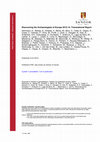
Kenneth Aitchison, Efthymia Alphas, Vera Ameels, Martin Bentz, Corina Borș, Elisa Cella, Kerri Cl... more Kenneth Aitchison, Efthymia Alphas, Vera Ameels, Martin Bentz, Corina Borș, Elisa Cella, Kerri Cleary, Claudia Costa, Paul Damian, Mariana Diniz, Cidalia Duarte, Jan Frolik, Carolina Grilo, Initiative for Heritage Conservancy, Nele Kangert, Raimund Karl, Anette Kjaerulf Andersen, Viire Kobrusepp, Tina Kompare, Eduard Krekovic, Miguel Lago da Silva, Andrew Lawler, Irena Lazar, Katheriin Liibert, Alexandra Lima, Gavin MacGregor, Niamh McCullagh, Michaela Macalova, Ain Maesalu, Magdalena Malinska, Arkadiusz Marciniak, Mārtiņs Mintaurs, Katharina Moller, Ulla Odgaard, Eva Parga-Dans, Doris Pavlov, Vesna Pintaric Kocuvan, Doug Rocks-Macqueen, Jette Rostock, Joao Pedro Tereso, Alessandro Pintucci, Elena S. Prokopiou, Jorge Raposo, Karin Scharringhausen, Tine Schenck, Marjo Schlaman, Jeanette Skaarup, Andris Snē, Danica Stassikova-Stukovska, Ingrid Ulst, Monique van den Dries, Heleen van Londen, Rocio Varela-Pousa, Catarina Viegas, Armands Vijups, Nathalie Vossen, Tobias Wachter & Ludwika ...
Disclaimer/Complaints regulations If you believe that digital publication of certain material inf... more Disclaimer/Complaints regulations If you believe that digital publication of certain material infringes any of your rights or (privacy) interests, please let the Library know, stating your reasons. In case of a legitimate complaint, the Library will make the material inaccessible and/or remove it from the website. Please Ask the Library: http://uba.uva.nl/en/contact, or a letter to: Library of the University of Amsterdam, Secretariat, Singel 425, 1012 WP Amsterdam, The Netherlands. You will be contacted as soon as possible.
Kleos publishes several types of papers; one of these is a dialogue paper by at least two authors... more Kleos publishes several types of papers; one of these is a dialogue paper by at least two authors. For the first dialogue of this series of articles, Karin Scharringhausen invited Dr. Manuel A. Fernández-Götz to respond to her review of his lecture “Path to complexity: Centralization and urbanization processes in Early Iron Age Europe”, given on 2 October 2013 at the Free University Amsterdam. In her review of the lecture Karin Scharringhausen focusses on the theoretical approach of Fernández-Götz. Manuel Fernández-Götz kindly wrote the response to Scharringhausen for the first Kleos dialogue. His contribution, the rise of urbanism in Early Europe, presents his complementary thoughts rather than a direct response.

Scharringhausen, K.D., 2014: The implications of the concepts use-life and lifespan in Dutch settlement archaeology (1500 BC-1300 AD), in: Duinker, H./E. Hopman/J. Steding (eds.), 2014: Proceedings of 11th SOJA, April 12, 2013 Groningen (=SOJA E-Bundel, 10). 11-19., Aug 2014
The aim of this paper is to give an account of the debate concerning the use-life of byre-houses ... more The aim of this paper is to give an account of the debate concerning the use-life of byre-houses in Dutch archaeology. This paper focuses on the insights and ideas concerning the concept of use-life gathered from almost a century of excavating byre-houses, which were built on sandy and moist soils.
In sum, the assumed limited use-life of byre-houses with an earthfast (or post-in-ground) construction has been examined; byre-houses were built during the Middle Bronze Age (after 1500 BC) until the High Middle Ages (ca. 1300 AD). At the end of the Middle Ages the ‘post on a padstone’ construction became the norm, resulting in a break with tradition and a substantially prolonged use-life.
First, this paper briefly discusses the definition of the concept use-life and its relation with the concept lifespan. Second, these two concepts are further explored. A compact analysis is made of the various aspects of the concept lifespan, which is more technical in nature. Then, this paper reviews the archaeological framework of social theories that shaped the contemporary assumptions about the use-life of byre-houses. In conclusion, the estimates of the average use-life for each archaeological period are confronted with those of the lifespan. Furthermore, an overview of the consequences of the use of these estimates in Dutch settlement archaeology is given and recommendations are made for further research.
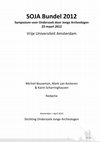
Scharringhausen, K.D./M. Van Kesteren 2013, 10 jaar SOJA; Verhalen en Feiten, in: M. Bouwman, et al. (eds.), SOJA E-Bundel 2012, Amsterdam 23 maart 2012, (=SOJA Bundel, 9), Amsterdam, 16-20., Apr 12, 2013
In 2002 is SOJA voortgekomen uit de wens om jonge archeologen een podium te bieden voor hun onder... more In 2002 is SOJA voortgekomen uit de wens om jonge archeologen een podium te bieden voor hun onderzoek. Na tien jaar was de vraag of deze wens nog steeds actueel is een voor de hand liggend thema. Het programma van de tiende editie van SOJA bood dan ook ruimte voor enige reflectie. Hiertoe werd Erik van Rossenberg, de bedenker van SOJA, gevraagd de key-note lecture te verzorgen. En in het verlengde daarvan werd de plenaire discussie gedomineerd door de vraag wat 10 jaar SOJA heeft bijgedragen aan de archeologie als wetenschap. Tijdens de opening van SOJA 2012 werd het thema 10 jaar SOJA ingevuld door twee bijdragen van het SOJA 2012 bestuur. Mark van Kesteren dook in het ontstaan en de geschiedenis van SOJA en presenteerde de ‘Verhalen’. Karin Scharringhausen bestudeerde de producten van 10 jaar SOJA, de programmaboekjes en de bundels en presenteerde de ‘Feiten’.
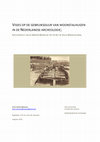
""De gebruiksduur van woonstalhuizen"
Een overzicht van aannames en argumenten voor bijna 3000 j... more ""De gebruiksduur van woonstalhuizen"
Een overzicht van aannames en argumenten voor bijna 3000 jaar bewonings-geschiedenis in de Lage Landen
Karin Scharringhausen, BA, Vrije Universiteit Amsterdam
Samenvatting
Hoe lang bewoonde men een woonstalhuis? Een vraag die Nederlandse archeologen in het verleden zeker heeft bezig gehouden, maar waar eigenlijk nooit een bevredigend antwoord op is gegeven. Door middel van literatuuronderzoek ben ik nagegaan op welke uitdagingen men hierbij is gestuit en op welke gebruiksduur men is uitgekomen. In mijn onderzoek heb ik me gericht op woonstalhuisboerderijen met een constructie van ingegraven houten palen, die werden gebouwd van de Midden Bronstijd tot en met de Volle Middeleeuwen.
De gebruiksduur wordt beïnvloed door de levensduur van de houten constructie. Deze tweedeling in levensduur en gebruiksduur heeft mijn onderzoeksaanpak sterk bepaald. Ten eerste heb ik de meer technische aspecten van de levensduur onderzocht. De levensduur van een woonstalhuis werd in hoge mate bepaald door de kwaliteit van de gebruikte houtsoort en de diameter van de houten ingegraven palen. Daarnaast spelen levensduurbeperkende factoren als de vochtigheidsgraad van de bodem, externe invloeden als bacteriën en schimmels en levensduurverlengende maatregelen een rol. Ten tweede heb ik de sociale theorieën bestudeerd, die de aannames over de gebruiksduur hebben vormgegeven. De discussie over de gebruiksduur wordt gevoerd door de voor- en tegenstanders van archeologische bewoningsmodellen en de cultureel biografische benadering. Afhankelijk van de periode voeren argumenten als duurzaamheid van het contructiehout, plaatsvastheid, generatieduur en overerving een rol.
De gebruiksduur van een woonstalhuis beïnvloedt de inschatting van de nederzettingspopulatie, de bevolkingsdichtheid en op basis daarvan worden nederzettingen onderling vergeleken en het akkerareaal berekend. Het is dan ook van belang dat de gebruiksduur zorgvuldig wordt bepaald. Aanknopingspunten daarvoor vindt men in zowel de archeologische resten van functionele activiteiten, zoals nieuwbouw, reparatie of verbouwing, als door betekenis toekennende activiteiten, zoals bouwoffers, gebruik van constructiehout met een symbolische waarde en verlatingsrituelen. De belangrijke rol die het gegeven gebruiksduur speelt in de uitwerking van opgravingsgegevens en de vertekening die foutieve aannames hierover kunnen hebben op de resultaten van het nederzettingsonderzoek, nodigen uit tot een nadere periodegebonden specificatie van het begrippenpaar levens- en gebruiksduur en vereisen verder onderzoek.""""
Reports by Karin Scharringhausen
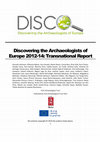
by Heleen van Londen, Joao Tereso, Rocío Varela-Pousa, Danica Staššíková-Štukovská, Andris Sne, Marjo Schlaman, Karin Scharringhausen, Eva Parga-Dans, Ain Mäesalu, Michaela Mácalová, Gavin MacGregor, Andrew Lawler, Katheriin Liibert, Tina Kompare, Nele Kangert, Jan Frolík, Mariana Diniz, Cláudia Costa, Kerri Cleary, Efthymia Alphas, Vesna Pintarič Kocuvan, Irena Lazar, Kenneth Aitchison, Tine Schenck, Katharina Möller, and Raimund Karl Between 2012 and 2014 representatives from 23 organisations in 21 European countries worked toget... more Between 2012 and 2014 representatives from 23 organisations in 21 European countries worked together in the Discovering the Archaeologists of Europe 2014 project to gain insight into the profile of the archaeological profession and labour market in those countries. The results can be compared with those of a predecessor Discovering the Archaeologists of Europe project, undertaken in 2006-08,
Employment. Across the 21 participating states, it is calculated that a total of over €1 billion is spent on professional archaeology every year, with the majority of that expenditure being on the salary costs of the estimated 24,740 people who work as archaeologists in these countries. This group of professionals represents 0.006% of the combined total workforces of those states. In many states, the absolute numbers employed in archaeology has fallen significantly over the previous six years. It is estimated that approximately 33,000 archaeologists now work across Europe as a whole.
Growth of the sector. Across Europe, organisations employing archaeologists have typically become smaller over the five years prior to this project, and employers are very cautious about predicting future growth.
Nature of the workforce. A slight majority (50.3% to 49.7%) of archaeologists are women. The proportion of women in the workforce has increased over the six years since 2006-08 from 45.9%. On average, European archaeologists are 40 years old. Very few European archaeologists are disabled – 1.1% of the total number of workers for whom data were available, a reduction from 1.5% in 2006-08.
Countries of Origin. 94% of archaeologists work in their own countries of origin, 5% are from other EU states and 1% from elsewhere in the world. Overall, this shows a slight decline in sectoral transnational mobility, as in 2006-08 more archaeologists were working away from their countries of origin.
Qualifications. In every participating state, it is normal for people working in archaeology to hold a degree – on aggregate, 94% of European archaeologists are graduates and the majority (69%) are postgraduates. 90% of archaeologists gained their highest qualifications in the countries in which they now work, with 9% obtaining those qualifications elsewhere in Europe (and 1% elsewhere in the world). When compared with the figures from 2006-08, this shows that archaeologists are increasingly educationally mobile.
Salaries. In twelve of the 21 participating states, archaeologists were paid less than the national average for all workers. An average figure of €24,901 was calculated as the mean salary earned by an archaeologist, but this is relatively meaningless as average salaries vary enormously between counties, with Danish archaeologists earning on average nine times the amount earned by their peers in Bosnia and Herzegovina.
Nature of the work. 78% of the archaeologists for whom data were available worked full-time and 22% part-time. This is a marked change from 2006-08, when the percentages were 86% full-time and 14% part-time. 63% of archaeologists held permanent contracts at the time of the research, while the remaining 37% of workers had time-limited contracts.
Structures. As was identified in the predecessor project in 2006-08, archaeological practice in the participating states is organised on different models, with varying levels of commercial activity balanced against state agency engagement. This is often linked to the funding basis of archaeological practice (variation both on the basis of funding from the state or from private sector industries, and on whether delivery is achieved by the state or by the private sector). Different states define who can be considered to be an archaeologist in different ways. Vocational education and training (VET) in the sector is almost universally delivered by universities through academic degree programmes.
Skills and Training Needs. Issues relating to specific training needs were assessed in each participating country, but, as in 2006-08, because of the variety of ways in which these questions were asked by the project partners (in order to accommodate the differing structures and approaches to archaeological work in each participating state), the information obtained cannot be usefully compared transnationally.
Trends and developments. In comparison with the predecessor work undertaken in 2006-08, the main ways that the sector has changed are that the number of jobs has decreased and the proportion of women working in the sector has increased. Furthermore, jobs are more likely to be part-time and for shorter contractual periods; archaeologists are more highly qualified, but are less well-paid in comparison with other sectors.
by Heleen van Londen, Rocío Varela-Pousa, Tine Schenck, Eva Parga-Dans, Andrew Lawler, Kerri Cleary, Irena Lazar, Raimund Karl, Cláudia Costa, Karin Scharringhausen, Marjo Schlaman, Ain Mäesalu, Katheriin Liibert, Katharina Möller, Nathalie Vossen, and Alessandro Pintucci Culture Programme European Commission, 2012
Between 2012 and 2014 representatives from 23 organisations in 21 European countries worked toget... more Between 2012 and 2014 representatives from 23 organisations in 21 European countries worked together in the Discovering the Archaeologists of Europe 2014 project to gain insight into the profile of the archaeological profession and labour market in those countries. The results can be compared with those of a predecessor Discovering the Archaeologists of Europe project, undertaken in 2006-08.
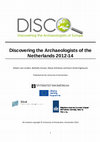
Presented here is the labour market survey of the Dutch archaeological sector for 2012 and 2013. ... more Presented here is the labour market survey of the Dutch archaeological sector for 2012 and 2013. The report presents the results of the second survey in a five year sequence of comparative research of the archaeological labour market and training in Europe. The survey is part of the European project Discovering the Archaeologists of Europe 2014, coordinated by York Archaeological Trust (YAT) and financed by the Leonardo da Vinci programme for Life Long Learning. Over twenty member states are represented in the overall study.
The study focuses on the paid workforce in the archaeology sector. The objectives for this study are formulated within the European project:
-Calculating workforce size in archaeology;
-profiling the profession in regards to diversity;
-insight in the situation and trends in the archaeological labour market, including investment in training, recruitment and career possibilities;
-insight in training demands and ‐ shortages;
-insight in the range of employers in archaeology;
-information for employers to further their businesses;
-information for individuals to further their careers;
-information for organizers of vocational training regarding training demands.
Results from this survey will be used in the Heritage Monitor maintained by the Cultural Heritage Agency of The Netherlands. Previous work to profile the archaeological sector show differences as well as similarities to the present research. Therefore, the Cultural Heritage Agency of The Netherlands will in future periodically organize surveys in close cooperation with the sector, using the present research as a basis.
Met behulp van een TR/CIA elektrische weerstandsmeter in Twin Probe configuratie is door 2 teams ... more Met behulp van een TR/CIA elektrische weerstandsmeter in Twin Probe configuratie is door 2 teams studenten van de VU een oppervlakte van 0.23 ha doorgemeten van een akker aan de Tilweg bij Gees. Deze akker bevat archeologische resten uit zowel de steentijd als de IJzertijd. Op luchtfoto’s zijn sporen van een Celtic field zichtbaar.
1. Kunnen er uitspraken worden gedaan over het soortenspectrum per periode? Vinden er ontwikkelin... more 1. Kunnen er uitspraken worden gedaan over het soortenspectrum per periode? Vinden er ontwikkelingen plaats door de tijd heen? Wat zegt dit over het voedselpatroon en de bedrijfsvoering op de nederzetting?
1. Kunnen er uitspraken worden gedaan over het soortenspectrum per periode? Vinden er ontwikkelin... more 1. Kunnen er uitspraken worden gedaan over het soortenspectrum per periode? Vinden er ontwikkelingen plaats door de tijd heen? Wat zegt dit over het voedselpatroon en de bedrijfsvoering op de nederzetting?
Call for Papers by Karin Scharringhausen
Are you interested in gaining academic publishing experience? Do you want to boost your academic ... more Are you interested in gaining academic publishing experience? Do you want to boost your academic CV and further develop your academic network? Would you like to publish your BA/MA thesis or a great paper from one of your courses?
KLEOS cordially invites enthusiastic starting researchers – including BA/MA and PhD students – from the fields of Ancient Studies and Archaeology to submit a paper to KLEOS – the Amsterdam Bulletin of Ancient Studies and Archaeology!
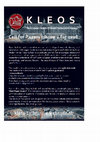
Kleos: Call for papers- second issue - 2016
Kleos is the Amsterdam Bulletin of Ancient Studies a... more Kleos: Call for papers- second issue - 2016
Kleos is the Amsterdam Bulletin of Ancient Studies and Archaeology. It is a peer-reviewed, open access English-language journal that publishes current research and review articles, in the fields of (ancient) history, classics and archaeology. Kleos is run by an editorial team of postgraduates from the Amsterdam Centre for Ancient Studies and Archaeology, and coached by members of ACASA’s academic staff.
Kleos bulletin invites contributions on archaeological method, theory, and valorisation with regard to the history and archaeology from Prehistoric to Early Modern times. Kleos bulletin is a graduate journal that encourages debate and presents research done by postgraduates, PhD candidates, as well as independent researchers in the fields of northwest European, Mediterranean and Near Eastern archaeology, and ancient history. The second issue of Kleos does not have a specific theme.
The deadline for submission of an abstract (ca. 300 words) is 24th June 2016.
The deadline for submission of a first draft is 30th August 2016.
For more details: https://www.academia.edu/12071064/Publish_your_paper_or_review
or check out our website: http://kleos-bulletin2-0.webnode.nl/
If you have any questions about the submission process, please email to kleosbulletin2.0@gmail.com
For the first time, Kleos bulletin will award the most downloaded paper with a “Best Paper Award”.
The best paper award aims to stimulate the dispersion and communication of academic knowledge and further the quality of student and young-academic papers.
The name of the winner will be published on the Kleos website and associated social media. There is an honorarium for the best paper award. This is currently set at 250 Euros for the winning paper.
Best Paper Award Guidelines:
1) The paper must be written by the author who submitted the first abstract or first draft of the paper. The paper can be a short/-long or a discussion article as described in the Kleos guidelines.
2) The paper may not have been published before in any other format and must have been published in the second issue of Kleos bulletin. Thus, excluding articles from previous issues or reprints of earlier drafts of papers.
3) Only downloads are counted, not online views. The downloads that count are from the Kleos academia site, https://vu-nl.academia.edu/KLEOSBulletin. The downloads will be made public so that authors and sponsors can follow your progress. The downloads will be counted for a period of three months. The highest count will win! If there are two or more papers with the same number of downloads, the paper that has been bookmarked most will win. If two or more papers have the same number of bookmarks, Kleos editorial team will extend the period in which downloads will be counted for a month until there is a clear winner.
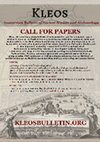
"Kleos, the new Amsterdam Bulletin of Ancient Studies and Archaeology is a peer-reviewed, open ac... more "Kleos, the new Amsterdam Bulletin of Ancient Studies and Archaeology is a peer-reviewed, open access English-language bulletin that publishes current research, as well as review articles, in the fields of (ancient) history, classics and archaeology. Kleos is run by an editorial team of postgraduates of the Amsterdam Centre for Ancient Studies and Archaeology and coached by members of ACASA’s academic staff.
The topics discussed in Kleos address archaeological method, theory, and valorisation with regard to the history and archaeology from Prehistoric to Early Modern times. The Journal encourages debate and presents research done by postgraduates, PhD candidates, as well as independent researchers in the fields of northwest European, Mediterranean and Near Eastern archaeology and ancient history.
Deadline
The deadline for submissions is 30th of May, 2014. If you have questions about the submission process, please email to info@kleosbulletin.org"
Symposia, sessions and conferences by Karin Scharringhausen
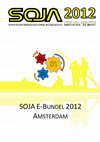
SOJA E-Bundel 2012
In 2002 werd het SOJA voor het eerst georganiseerd. Inmiddels biedt SOJA al 1... more SOJA E-Bundel 2012
In 2002 werd het SOJA voor het eerst georganiseerd. Inmiddels biedt SOJA al 10 jaar een laagdrempelig podium aan "jonge archeologen" om hun onderzoek te presenteren. In de meeste gevallen gaat het om afstudeeronderzoeken van masterstudenten of onderzoek van jonge onderzoekers. Dit is een categorie van onderzoek, die omvangrijk en interessant is, maar lang niet altijd de aandacht krijgt die het verdient. Op het SOJA krijgen studenten en jonge onderzoekers niet alleen de gelegenheid hun onderzoek te presenteren, maar ook om het te publiceren. Na het jaarlijkse symposium worden door diverse sprekers bijdragen geschreven over hun onderzoek, die worden opgenomen in de SOJA bundel. Deze bundel wordt op het eerstvolgende SOJA door de redactie aangeboden aan het SOJA bestuur.
Voor u ligt de negende SOJA bundel. De SOJA bundel 2012 is de tweede E-bundel in navolging van de SOJA E-bundel 2011. Er is dit jaar weer gekozen voor een E-bundel omdat de ervaring leert dat elektronische artikelen makkelijker worden gevonden en het vrij downloaden van PDF’s ervoor zorgt dat onderzoek een breed publiek bereikt. Deze laagdrempelige wijze van distributie waarbij een zo groot mogelijke doelgroep wordt bereikt, sluit volledig aan bij de gedachte achter SOJA: jonge onderzoekers de gelegenheid bieden hun onderzoek te presenteren
Progamme for the Symposium Research Young Dutch Archeologists 2012, edited by Lisanne Geerts.
Talks by Karin Scharringhausen
What was the use-life of a byre-house? This question has certainly had the attention of Dutch arc... more What was the use-life of a byre-house? This question has certainly had the attention of Dutch archaeologists, but until now no satisfactory answer has been found. The aim of my BA-thesis has been to give an account of the development of the debate concerning the uselife of byre-houses. The study was conducted in the form of a literature review, which gathered insights and ideas from almost a century of excavating byre-houses. In particular, the limited use-life of byre-houses with an earthfast (or post-in-ground) construction was examined; these houses were built during the Middle Bronze Age (after 1500 BC) until the High Middle Ages. At the end of the Middle Ages the 'post on a padstone' construction became the norm, resulting in a break with tradition and a substantially prolonged use-life.
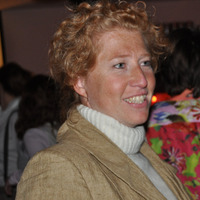
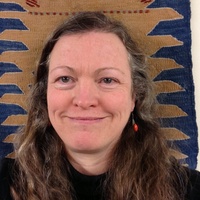
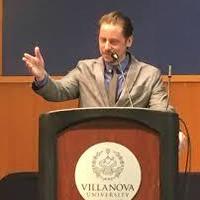
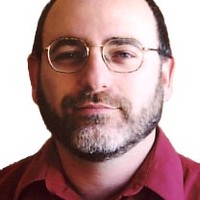







Uploads
Papers by Karin Scharringhausen
In sum, the assumed limited use-life of byre-houses with an earthfast (or post-in-ground) construction has been examined; byre-houses were built during the Middle Bronze Age (after 1500 BC) until the High Middle Ages (ca. 1300 AD). At the end of the Middle Ages the ‘post on a padstone’ construction became the norm, resulting in a break with tradition and a substantially prolonged use-life.
First, this paper briefly discusses the definition of the concept use-life and its relation with the concept lifespan. Second, these two concepts are further explored. A compact analysis is made of the various aspects of the concept lifespan, which is more technical in nature. Then, this paper reviews the archaeological framework of social theories that shaped the contemporary assumptions about the use-life of byre-houses. In conclusion, the estimates of the average use-life for each archaeological period are confronted with those of the lifespan. Furthermore, an overview of the consequences of the use of these estimates in Dutch settlement archaeology is given and recommendations are made for further research.
Een overzicht van aannames en argumenten voor bijna 3000 jaar bewonings-geschiedenis in de Lage Landen
Karin Scharringhausen, BA, Vrije Universiteit Amsterdam
Samenvatting
Hoe lang bewoonde men een woonstalhuis? Een vraag die Nederlandse archeologen in het verleden zeker heeft bezig gehouden, maar waar eigenlijk nooit een bevredigend antwoord op is gegeven. Door middel van literatuuronderzoek ben ik nagegaan op welke uitdagingen men hierbij is gestuit en op welke gebruiksduur men is uitgekomen. In mijn onderzoek heb ik me gericht op woonstalhuisboerderijen met een constructie van ingegraven houten palen, die werden gebouwd van de Midden Bronstijd tot en met de Volle Middeleeuwen.
De gebruiksduur wordt beïnvloed door de levensduur van de houten constructie. Deze tweedeling in levensduur en gebruiksduur heeft mijn onderzoeksaanpak sterk bepaald. Ten eerste heb ik de meer technische aspecten van de levensduur onderzocht. De levensduur van een woonstalhuis werd in hoge mate bepaald door de kwaliteit van de gebruikte houtsoort en de diameter van de houten ingegraven palen. Daarnaast spelen levensduurbeperkende factoren als de vochtigheidsgraad van de bodem, externe invloeden als bacteriën en schimmels en levensduurverlengende maatregelen een rol. Ten tweede heb ik de sociale theorieën bestudeerd, die de aannames over de gebruiksduur hebben vormgegeven. De discussie over de gebruiksduur wordt gevoerd door de voor- en tegenstanders van archeologische bewoningsmodellen en de cultureel biografische benadering. Afhankelijk van de periode voeren argumenten als duurzaamheid van het contructiehout, plaatsvastheid, generatieduur en overerving een rol.
De gebruiksduur van een woonstalhuis beïnvloedt de inschatting van de nederzettingspopulatie, de bevolkingsdichtheid en op basis daarvan worden nederzettingen onderling vergeleken en het akkerareaal berekend. Het is dan ook van belang dat de gebruiksduur zorgvuldig wordt bepaald. Aanknopingspunten daarvoor vindt men in zowel de archeologische resten van functionele activiteiten, zoals nieuwbouw, reparatie of verbouwing, als door betekenis toekennende activiteiten, zoals bouwoffers, gebruik van constructiehout met een symbolische waarde en verlatingsrituelen. De belangrijke rol die het gegeven gebruiksduur speelt in de uitwerking van opgravingsgegevens en de vertekening die foutieve aannames hierover kunnen hebben op de resultaten van het nederzettingsonderzoek, nodigen uit tot een nadere periodegebonden specificatie van het begrippenpaar levens- en gebruiksduur en vereisen verder onderzoek.""""
Reports by Karin Scharringhausen
Employment. Across the 21 participating states, it is calculated that a total of over €1 billion is spent on professional archaeology every year, with the majority of that expenditure being on the salary costs of the estimated 24,740 people who work as archaeologists in these countries. This group of professionals represents 0.006% of the combined total workforces of those states. In many states, the absolute numbers employed in archaeology has fallen significantly over the previous six years. It is estimated that approximately 33,000 archaeologists now work across Europe as a whole.
Growth of the sector. Across Europe, organisations employing archaeologists have typically become smaller over the five years prior to this project, and employers are very cautious about predicting future growth.
Nature of the workforce. A slight majority (50.3% to 49.7%) of archaeologists are women. The proportion of women in the workforce has increased over the six years since 2006-08 from 45.9%. On average, European archaeologists are 40 years old. Very few European archaeologists are disabled – 1.1% of the total number of workers for whom data were available, a reduction from 1.5% in 2006-08.
Countries of Origin. 94% of archaeologists work in their own countries of origin, 5% are from other EU states and 1% from elsewhere in the world. Overall, this shows a slight decline in sectoral transnational mobility, as in 2006-08 more archaeologists were working away from their countries of origin.
Qualifications. In every participating state, it is normal for people working in archaeology to hold a degree – on aggregate, 94% of European archaeologists are graduates and the majority (69%) are postgraduates. 90% of archaeologists gained their highest qualifications in the countries in which they now work, with 9% obtaining those qualifications elsewhere in Europe (and 1% elsewhere in the world). When compared with the figures from 2006-08, this shows that archaeologists are increasingly educationally mobile.
Salaries. In twelve of the 21 participating states, archaeologists were paid less than the national average for all workers. An average figure of €24,901 was calculated as the mean salary earned by an archaeologist, but this is relatively meaningless as average salaries vary enormously between counties, with Danish archaeologists earning on average nine times the amount earned by their peers in Bosnia and Herzegovina.
Nature of the work. 78% of the archaeologists for whom data were available worked full-time and 22% part-time. This is a marked change from 2006-08, when the percentages were 86% full-time and 14% part-time. 63% of archaeologists held permanent contracts at the time of the research, while the remaining 37% of workers had time-limited contracts.
Structures. As was identified in the predecessor project in 2006-08, archaeological practice in the participating states is organised on different models, with varying levels of commercial activity balanced against state agency engagement. This is often linked to the funding basis of archaeological practice (variation both on the basis of funding from the state or from private sector industries, and on whether delivery is achieved by the state or by the private sector). Different states define who can be considered to be an archaeologist in different ways. Vocational education and training (VET) in the sector is almost universally delivered by universities through academic degree programmes.
Skills and Training Needs. Issues relating to specific training needs were assessed in each participating country, but, as in 2006-08, because of the variety of ways in which these questions were asked by the project partners (in order to accommodate the differing structures and approaches to archaeological work in each participating state), the information obtained cannot be usefully compared transnationally.
Trends and developments. In comparison with the predecessor work undertaken in 2006-08, the main ways that the sector has changed are that the number of jobs has decreased and the proportion of women working in the sector has increased. Furthermore, jobs are more likely to be part-time and for shorter contractual periods; archaeologists are more highly qualified, but are less well-paid in comparison with other sectors.
The study focuses on the paid workforce in the archaeology sector. The objectives for this study are formulated within the European project:
-Calculating workforce size in archaeology;
-profiling the profession in regards to diversity;
-insight in the situation and trends in the archaeological labour market, including investment in training, recruitment and career possibilities;
-insight in training demands and ‐ shortages;
-insight in the range of employers in archaeology;
-information for employers to further their businesses;
-information for individuals to further their careers;
-information for organizers of vocational training regarding training demands.
Results from this survey will be used in the Heritage Monitor maintained by the Cultural Heritage Agency of The Netherlands. Previous work to profile the archaeological sector show differences as well as similarities to the present research. Therefore, the Cultural Heritage Agency of The Netherlands will in future periodically organize surveys in close cooperation with the sector, using the present research as a basis.
Call for Papers by Karin Scharringhausen
KLEOS cordially invites enthusiastic starting researchers – including BA/MA and PhD students – from the fields of Ancient Studies and Archaeology to submit a paper to KLEOS – the Amsterdam Bulletin of Ancient Studies and Archaeology!
Kleos is the Amsterdam Bulletin of Ancient Studies and Archaeology. It is a peer-reviewed, open access English-language journal that publishes current research and review articles, in the fields of (ancient) history, classics and archaeology. Kleos is run by an editorial team of postgraduates from the Amsterdam Centre for Ancient Studies and Archaeology, and coached by members of ACASA’s academic staff.
Kleos bulletin invites contributions on archaeological method, theory, and valorisation with regard to the history and archaeology from Prehistoric to Early Modern times. Kleos bulletin is a graduate journal that encourages debate and presents research done by postgraduates, PhD candidates, as well as independent researchers in the fields of northwest European, Mediterranean and Near Eastern archaeology, and ancient history. The second issue of Kleos does not have a specific theme.
The deadline for submission of an abstract (ca. 300 words) is 24th June 2016.
The deadline for submission of a first draft is 30th August 2016.
For more details: https://www.academia.edu/12071064/Publish_your_paper_or_review
or check out our website: http://kleos-bulletin2-0.webnode.nl/
If you have any questions about the submission process, please email to kleosbulletin2.0@gmail.com
For the first time, Kleos bulletin will award the most downloaded paper with a “Best Paper Award”.
The best paper award aims to stimulate the dispersion and communication of academic knowledge and further the quality of student and young-academic papers.
The name of the winner will be published on the Kleos website and associated social media. There is an honorarium for the best paper award. This is currently set at 250 Euros for the winning paper.
Best Paper Award Guidelines:
1) The paper must be written by the author who submitted the first abstract or first draft of the paper. The paper can be a short/-long or a discussion article as described in the Kleos guidelines.
2) The paper may not have been published before in any other format and must have been published in the second issue of Kleos bulletin. Thus, excluding articles from previous issues or reprints of earlier drafts of papers.
3) Only downloads are counted, not online views. The downloads that count are from the Kleos academia site, https://vu-nl.academia.edu/KLEOSBulletin. The downloads will be made public so that authors and sponsors can follow your progress. The downloads will be counted for a period of three months. The highest count will win! If there are two or more papers with the same number of downloads, the paper that has been bookmarked most will win. If two or more papers have the same number of bookmarks, Kleos editorial team will extend the period in which downloads will be counted for a month until there is a clear winner.
The topics discussed in Kleos address archaeological method, theory, and valorisation with regard to the history and archaeology from Prehistoric to Early Modern times. The Journal encourages debate and presents research done by postgraduates, PhD candidates, as well as independent researchers in the fields of northwest European, Mediterranean and Near Eastern archaeology and ancient history.
Deadline
The deadline for submissions is 30th of May, 2014. If you have questions about the submission process, please email to info@kleosbulletin.org"
Symposia, sessions and conferences by Karin Scharringhausen
In 2002 werd het SOJA voor het eerst georganiseerd. Inmiddels biedt SOJA al 10 jaar een laagdrempelig podium aan "jonge archeologen" om hun onderzoek te presenteren. In de meeste gevallen gaat het om afstudeeronderzoeken van masterstudenten of onderzoek van jonge onderzoekers. Dit is een categorie van onderzoek, die omvangrijk en interessant is, maar lang niet altijd de aandacht krijgt die het verdient. Op het SOJA krijgen studenten en jonge onderzoekers niet alleen de gelegenheid hun onderzoek te presenteren, maar ook om het te publiceren. Na het jaarlijkse symposium worden door diverse sprekers bijdragen geschreven over hun onderzoek, die worden opgenomen in de SOJA bundel. Deze bundel wordt op het eerstvolgende SOJA door de redactie aangeboden aan het SOJA bestuur.
Voor u ligt de negende SOJA bundel. De SOJA bundel 2012 is de tweede E-bundel in navolging van de SOJA E-bundel 2011. Er is dit jaar weer gekozen voor een E-bundel omdat de ervaring leert dat elektronische artikelen makkelijker worden gevonden en het vrij downloaden van PDF’s ervoor zorgt dat onderzoek een breed publiek bereikt. Deze laagdrempelige wijze van distributie waarbij een zo groot mogelijke doelgroep wordt bereikt, sluit volledig aan bij de gedachte achter SOJA: jonge onderzoekers de gelegenheid bieden hun onderzoek te presenteren
Talks by Karin Scharringhausen
In sum, the assumed limited use-life of byre-houses with an earthfast (or post-in-ground) construction has been examined; byre-houses were built during the Middle Bronze Age (after 1500 BC) until the High Middle Ages (ca. 1300 AD). At the end of the Middle Ages the ‘post on a padstone’ construction became the norm, resulting in a break with tradition and a substantially prolonged use-life.
First, this paper briefly discusses the definition of the concept use-life and its relation with the concept lifespan. Second, these two concepts are further explored. A compact analysis is made of the various aspects of the concept lifespan, which is more technical in nature. Then, this paper reviews the archaeological framework of social theories that shaped the contemporary assumptions about the use-life of byre-houses. In conclusion, the estimates of the average use-life for each archaeological period are confronted with those of the lifespan. Furthermore, an overview of the consequences of the use of these estimates in Dutch settlement archaeology is given and recommendations are made for further research.
Een overzicht van aannames en argumenten voor bijna 3000 jaar bewonings-geschiedenis in de Lage Landen
Karin Scharringhausen, BA, Vrije Universiteit Amsterdam
Samenvatting
Hoe lang bewoonde men een woonstalhuis? Een vraag die Nederlandse archeologen in het verleden zeker heeft bezig gehouden, maar waar eigenlijk nooit een bevredigend antwoord op is gegeven. Door middel van literatuuronderzoek ben ik nagegaan op welke uitdagingen men hierbij is gestuit en op welke gebruiksduur men is uitgekomen. In mijn onderzoek heb ik me gericht op woonstalhuisboerderijen met een constructie van ingegraven houten palen, die werden gebouwd van de Midden Bronstijd tot en met de Volle Middeleeuwen.
De gebruiksduur wordt beïnvloed door de levensduur van de houten constructie. Deze tweedeling in levensduur en gebruiksduur heeft mijn onderzoeksaanpak sterk bepaald. Ten eerste heb ik de meer technische aspecten van de levensduur onderzocht. De levensduur van een woonstalhuis werd in hoge mate bepaald door de kwaliteit van de gebruikte houtsoort en de diameter van de houten ingegraven palen. Daarnaast spelen levensduurbeperkende factoren als de vochtigheidsgraad van de bodem, externe invloeden als bacteriën en schimmels en levensduurverlengende maatregelen een rol. Ten tweede heb ik de sociale theorieën bestudeerd, die de aannames over de gebruiksduur hebben vormgegeven. De discussie over de gebruiksduur wordt gevoerd door de voor- en tegenstanders van archeologische bewoningsmodellen en de cultureel biografische benadering. Afhankelijk van de periode voeren argumenten als duurzaamheid van het contructiehout, plaatsvastheid, generatieduur en overerving een rol.
De gebruiksduur van een woonstalhuis beïnvloedt de inschatting van de nederzettingspopulatie, de bevolkingsdichtheid en op basis daarvan worden nederzettingen onderling vergeleken en het akkerareaal berekend. Het is dan ook van belang dat de gebruiksduur zorgvuldig wordt bepaald. Aanknopingspunten daarvoor vindt men in zowel de archeologische resten van functionele activiteiten, zoals nieuwbouw, reparatie of verbouwing, als door betekenis toekennende activiteiten, zoals bouwoffers, gebruik van constructiehout met een symbolische waarde en verlatingsrituelen. De belangrijke rol die het gegeven gebruiksduur speelt in de uitwerking van opgravingsgegevens en de vertekening die foutieve aannames hierover kunnen hebben op de resultaten van het nederzettingsonderzoek, nodigen uit tot een nadere periodegebonden specificatie van het begrippenpaar levens- en gebruiksduur en vereisen verder onderzoek.""""
Employment. Across the 21 participating states, it is calculated that a total of over €1 billion is spent on professional archaeology every year, with the majority of that expenditure being on the salary costs of the estimated 24,740 people who work as archaeologists in these countries. This group of professionals represents 0.006% of the combined total workforces of those states. In many states, the absolute numbers employed in archaeology has fallen significantly over the previous six years. It is estimated that approximately 33,000 archaeologists now work across Europe as a whole.
Growth of the sector. Across Europe, organisations employing archaeologists have typically become smaller over the five years prior to this project, and employers are very cautious about predicting future growth.
Nature of the workforce. A slight majority (50.3% to 49.7%) of archaeologists are women. The proportion of women in the workforce has increased over the six years since 2006-08 from 45.9%. On average, European archaeologists are 40 years old. Very few European archaeologists are disabled – 1.1% of the total number of workers for whom data were available, a reduction from 1.5% in 2006-08.
Countries of Origin. 94% of archaeologists work in their own countries of origin, 5% are from other EU states and 1% from elsewhere in the world. Overall, this shows a slight decline in sectoral transnational mobility, as in 2006-08 more archaeologists were working away from their countries of origin.
Qualifications. In every participating state, it is normal for people working in archaeology to hold a degree – on aggregate, 94% of European archaeologists are graduates and the majority (69%) are postgraduates. 90% of archaeologists gained their highest qualifications in the countries in which they now work, with 9% obtaining those qualifications elsewhere in Europe (and 1% elsewhere in the world). When compared with the figures from 2006-08, this shows that archaeologists are increasingly educationally mobile.
Salaries. In twelve of the 21 participating states, archaeologists were paid less than the national average for all workers. An average figure of €24,901 was calculated as the mean salary earned by an archaeologist, but this is relatively meaningless as average salaries vary enormously between counties, with Danish archaeologists earning on average nine times the amount earned by their peers in Bosnia and Herzegovina.
Nature of the work. 78% of the archaeologists for whom data were available worked full-time and 22% part-time. This is a marked change from 2006-08, when the percentages were 86% full-time and 14% part-time. 63% of archaeologists held permanent contracts at the time of the research, while the remaining 37% of workers had time-limited contracts.
Structures. As was identified in the predecessor project in 2006-08, archaeological practice in the participating states is organised on different models, with varying levels of commercial activity balanced against state agency engagement. This is often linked to the funding basis of archaeological practice (variation both on the basis of funding from the state or from private sector industries, and on whether delivery is achieved by the state or by the private sector). Different states define who can be considered to be an archaeologist in different ways. Vocational education and training (VET) in the sector is almost universally delivered by universities through academic degree programmes.
Skills and Training Needs. Issues relating to specific training needs were assessed in each participating country, but, as in 2006-08, because of the variety of ways in which these questions were asked by the project partners (in order to accommodate the differing structures and approaches to archaeological work in each participating state), the information obtained cannot be usefully compared transnationally.
Trends and developments. In comparison with the predecessor work undertaken in 2006-08, the main ways that the sector has changed are that the number of jobs has decreased and the proportion of women working in the sector has increased. Furthermore, jobs are more likely to be part-time and for shorter contractual periods; archaeologists are more highly qualified, but are less well-paid in comparison with other sectors.
The study focuses on the paid workforce in the archaeology sector. The objectives for this study are formulated within the European project:
-Calculating workforce size in archaeology;
-profiling the profession in regards to diversity;
-insight in the situation and trends in the archaeological labour market, including investment in training, recruitment and career possibilities;
-insight in training demands and ‐ shortages;
-insight in the range of employers in archaeology;
-information for employers to further their businesses;
-information for individuals to further their careers;
-information for organizers of vocational training regarding training demands.
Results from this survey will be used in the Heritage Monitor maintained by the Cultural Heritage Agency of The Netherlands. Previous work to profile the archaeological sector show differences as well as similarities to the present research. Therefore, the Cultural Heritage Agency of The Netherlands will in future periodically organize surveys in close cooperation with the sector, using the present research as a basis.
KLEOS cordially invites enthusiastic starting researchers – including BA/MA and PhD students – from the fields of Ancient Studies and Archaeology to submit a paper to KLEOS – the Amsterdam Bulletin of Ancient Studies and Archaeology!
Kleos is the Amsterdam Bulletin of Ancient Studies and Archaeology. It is a peer-reviewed, open access English-language journal that publishes current research and review articles, in the fields of (ancient) history, classics and archaeology. Kleos is run by an editorial team of postgraduates from the Amsterdam Centre for Ancient Studies and Archaeology, and coached by members of ACASA’s academic staff.
Kleos bulletin invites contributions on archaeological method, theory, and valorisation with regard to the history and archaeology from Prehistoric to Early Modern times. Kleos bulletin is a graduate journal that encourages debate and presents research done by postgraduates, PhD candidates, as well as independent researchers in the fields of northwest European, Mediterranean and Near Eastern archaeology, and ancient history. The second issue of Kleos does not have a specific theme.
The deadline for submission of an abstract (ca. 300 words) is 24th June 2016.
The deadline for submission of a first draft is 30th August 2016.
For more details: https://www.academia.edu/12071064/Publish_your_paper_or_review
or check out our website: http://kleos-bulletin2-0.webnode.nl/
If you have any questions about the submission process, please email to kleosbulletin2.0@gmail.com
For the first time, Kleos bulletin will award the most downloaded paper with a “Best Paper Award”.
The best paper award aims to stimulate the dispersion and communication of academic knowledge and further the quality of student and young-academic papers.
The name of the winner will be published on the Kleos website and associated social media. There is an honorarium for the best paper award. This is currently set at 250 Euros for the winning paper.
Best Paper Award Guidelines:
1) The paper must be written by the author who submitted the first abstract or first draft of the paper. The paper can be a short/-long or a discussion article as described in the Kleos guidelines.
2) The paper may not have been published before in any other format and must have been published in the second issue of Kleos bulletin. Thus, excluding articles from previous issues or reprints of earlier drafts of papers.
3) Only downloads are counted, not online views. The downloads that count are from the Kleos academia site, https://vu-nl.academia.edu/KLEOSBulletin. The downloads will be made public so that authors and sponsors can follow your progress. The downloads will be counted for a period of three months. The highest count will win! If there are two or more papers with the same number of downloads, the paper that has been bookmarked most will win. If two or more papers have the same number of bookmarks, Kleos editorial team will extend the period in which downloads will be counted for a month until there is a clear winner.
The topics discussed in Kleos address archaeological method, theory, and valorisation with regard to the history and archaeology from Prehistoric to Early Modern times. The Journal encourages debate and presents research done by postgraduates, PhD candidates, as well as independent researchers in the fields of northwest European, Mediterranean and Near Eastern archaeology and ancient history.
Deadline
The deadline for submissions is 30th of May, 2014. If you have questions about the submission process, please email to info@kleosbulletin.org"
In 2002 werd het SOJA voor het eerst georganiseerd. Inmiddels biedt SOJA al 10 jaar een laagdrempelig podium aan "jonge archeologen" om hun onderzoek te presenteren. In de meeste gevallen gaat het om afstudeeronderzoeken van masterstudenten of onderzoek van jonge onderzoekers. Dit is een categorie van onderzoek, die omvangrijk en interessant is, maar lang niet altijd de aandacht krijgt die het verdient. Op het SOJA krijgen studenten en jonge onderzoekers niet alleen de gelegenheid hun onderzoek te presenteren, maar ook om het te publiceren. Na het jaarlijkse symposium worden door diverse sprekers bijdragen geschreven over hun onderzoek, die worden opgenomen in de SOJA bundel. Deze bundel wordt op het eerstvolgende SOJA door de redactie aangeboden aan het SOJA bestuur.
Voor u ligt de negende SOJA bundel. De SOJA bundel 2012 is de tweede E-bundel in navolging van de SOJA E-bundel 2011. Er is dit jaar weer gekozen voor een E-bundel omdat de ervaring leert dat elektronische artikelen makkelijker worden gevonden en het vrij downloaden van PDF’s ervoor zorgt dat onderzoek een breed publiek bereikt. Deze laagdrempelige wijze van distributie waarbij een zo groot mogelijke doelgroep wordt bereikt, sluit volledig aan bij de gedachte achter SOJA: jonge onderzoekers de gelegenheid bieden hun onderzoek te presenteren
In 2008 is voor het eerst in het kader van DISCO een vergelijkend onderzoek uitgevoerd naar werkgelegenheid en opleidingen binnen de archeologische beroepsgroep in 12 Europese landen. DISCO14 is het vervolg op dit project waarin opnieuw wordt gekeken naar de Europese archeologische beroepsgroep, nu in 20 landen. De Rijksdienst voor het Cultureel Erfgoed (RCE), de Universiteit van Amsterdam (UvA) en de Nederlandse Vereniging van Archeologen (NVvA) werken samen in het project DISCO14.
De hele archeologische sector (overheid, archeologische bedrijven, zzp’ers, musea etc.) is benaderd om een online vragenlijst in te vullen. Hiermee zijn gegevens verzameld over de archeologische sector, hoe deze is georganiseerd, hoe sluiten de archeologische opleidingen aan bij de arbeidsmarkt en in hoeverre wordt voorzien in na- of bijscholing. Daarnaast ligt bij DISCO14 sterk de nadruk op de gevolgen van de financiële crisis voor de archeologie, vooral daar waar het gaat om werkgelegenheid en investeringen in opleidingen.
Op deze poster presenteren wij de eerste resultaten.